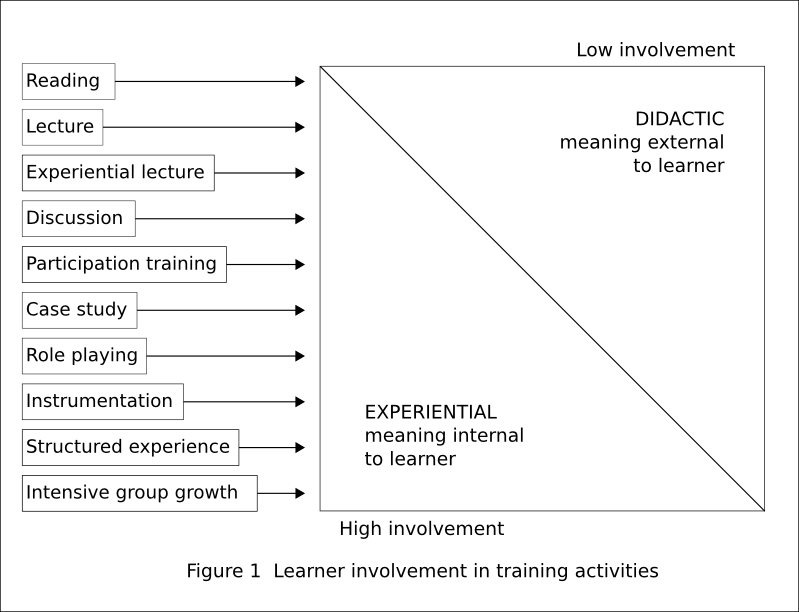| Activity |
A design for participation to create a common
experience
for study and discussion
|
| Case study |
Group discussion and problem-solving from material
about
an actual or hypothetical situation
|
| Contracting |
Participants make promises about what they will apply
in
their future professional lives based on what has been learnt on the
programme. This can be in the form of a contract with oneself by
writing down these new behaviours, presenting them to the group, or
discussion in small groups.
|
| Deductive |
A learning situation that begins with
“truth” and proceeds to its logical conclusions
|
| Didactic |
A teaching approach in which an expert imparts
information
|
| Experiential |
An approach to learning in which participants in an
activity learn through reflection on the activity itself
|
| Inductive |
A learning method that is based on the discovery of
“truth” from the examination of experience
|
| Intensive growth
group |
Unstructured experience where a
group involves itself in a therapeutic-type interaction |
| Instrument |
Paper-and-pencil exercise use to rate oneself according
to a pre-designed system, for example, assessment scale or opinion.
This is a non-clinical device used to focus on particular behavioral
science concepts. It provides a set of data by which participants can
explore themselves and others in the relative safety of a training
activity.
|
| Instrumentation |
The use of instruments in training or research
|
| Processing |
Group discussion of the results of a learning activity
|
| Role playing |
A design for learning in which participants act out a
situation through assigned parts that they play spontaneously
|
| Structured experience |
A design for inductive learning through the
implementation of the experiential learning cycle; focusses on
particular learning goals
|

